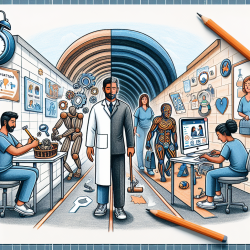Introduction
Cardiac rehabilitation (CR) is a cornerstone in the management of cardiovascular diseases (CVD), offering structured exercise, patient education, and risk factor management. The research article "Cardiac rehabilitation in Canada and Arab countries: comparing availability and program characteristics" provides a comprehensive comparison of CR programs in these regions. For practitioners, understanding these differences and similarities can enhance program delivery and patient outcomes.
Key Findings from the Research
The study highlights several critical points:
- Availability of CR programs is significantly lower in Arab countries compared to Canada, with only 8 programs identified in the former.
- Arab programs often offer women-only classes, addressing cultural needs, while Canadian programs provide more diverse delivery models, including community-based and home-based options.
- Both regions face barriers such as lack of human resources and financial constraints, but Arab countries also struggle with space limitations.
- Despite these challenges, the core components of CR, including risk factor assessment and patient education, are consistent across both regions.
Implications for Practitioners
For practitioners, these findings underscore the importance of tailoring CR programs to meet regional needs while maintaining core therapeutic elements. Here are some strategies to consider:
- Adaptation of Programs: Incorporate culturally sensitive elements, such as women-only classes, to improve accessibility and participation.
- Resource Allocation: Focus on optimizing available resources and advocating for increased funding and space to expand program capacity.
- Training and Education: Develop region-specific training programs for healthcare professionals to ensure high-quality CR delivery.
Encouraging Further Research
The study reveals a need for more comprehensive data on CR programs in low- and middle-income countries, particularly in the Arab world. Practitioners are encouraged to engage in research initiatives that explore CR delivery models, patient outcomes, and barriers to access. Such efforts can inform policy changes and improve CR availability globally.
Conclusion
Cardiac rehabilitation is a vital component of secondary prevention in CVD management. By understanding the regional differences and challenges in CR program delivery, practitioners can enhance their services and contribute to better patient outcomes. To delve deeper into the research findings, read the original research paper: Cardiac rehabilitation in Canada and Arab countries: comparing availability and program characteristics.










